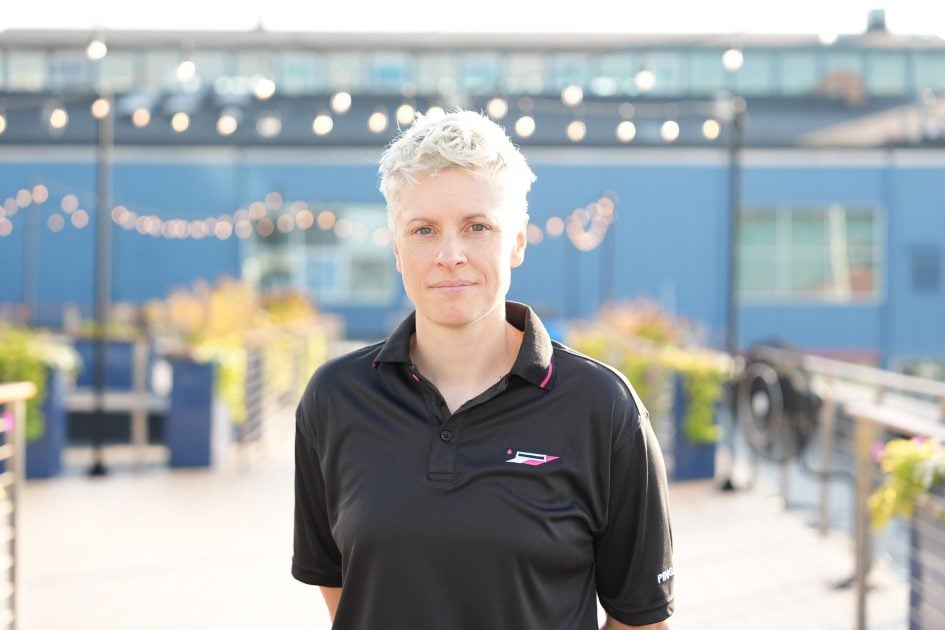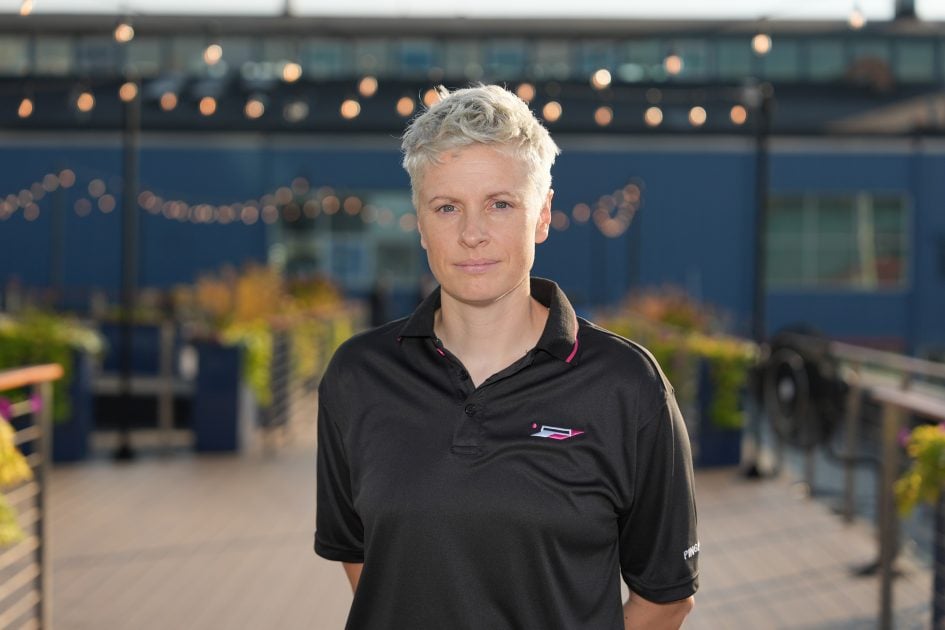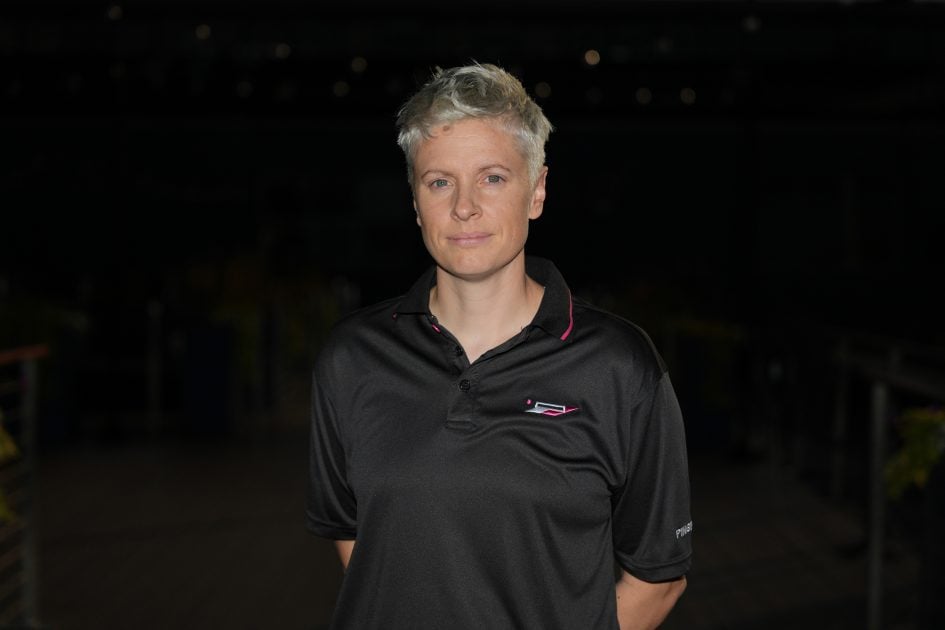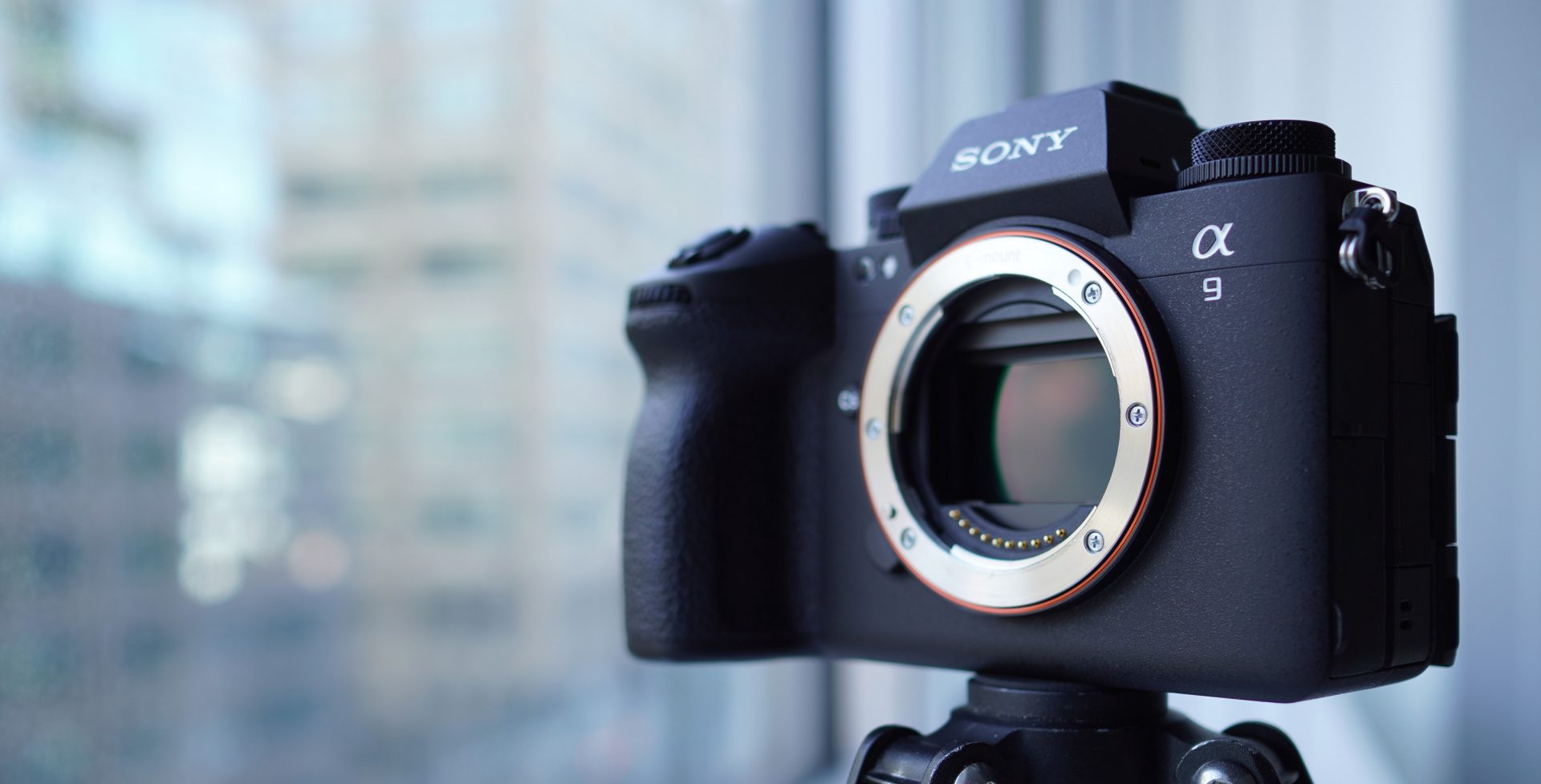Sony A9 III review so far
-
-
Written by Gordon Laing
Intro
The Sony Alpha 9 III is a supremely quick 24 Megapixel full-frame camera, with a global shutter that allows 120fps bursts, flash sync up to 1/80,000 and photos and videos that are free from distortion.
Announced in November 2023 at a price of around $6000 or pounds, it’s an unashamedly specialist camera primarily aimed at pro sports and action photographers, although could also tempt videographers or silent shooters who wish to banish the skewing effect of rolling shutter or banding from artificial lights.
In the video below I’ll show you everything I know so far based on spending some time with a pre-production A9 III at a Sony press event, as well as interviewing Sony engineers about the new technology. If you prefer to read the written highlights, keep scrolling. I plan on updating this page with tests and results from a final production camera when they become available.
The key behind the A9 III’s capabilities is having a sensor with a global shutter, which can read the entire image in one go, rather than line-by-line on traditional sensors.
Sure, the stacked sensors on models like the Nikon Z-9, Canon R3 and Sony’s previous A9’s and A1 may all be very quick, but their electronic shutters still read sequentially line-by-line, and can suffer from skewing and banding artefacts.
In contrast, the A9 III’s global shutter eliminates skewing on video or electronic stills, as well as allowing bursts up to 120fps, with autofocus at the full 24 Megapixel resolution, even in 14 bit RAW.
The A9 III’s global shutter also means no banding from artificial lights, and the ability to synchronise a flash at any shutter speed even up to the camera’s maximum speed of 1/80,000.
Indeed it’s the capabilities of a global shutter that’s allowed Sony to dispense with a mechanical shutter altogether and deliver an entirely electronic camera.
And remember while the Nikon Z-8 and Z-9 are also fully electronic, they don’t have a global shutter. Again their stacked sensor may be very quick, but not as fast as the new Sony.
Now global shutters aren’t a new thing. They’ve been around for ages, most commonly on early CCD sensors and today typically deployed for industrial or specialist applications.
But the A9 III becomes the first camera to sport a full-frame CMOS sensor with global shutter. It’s large, it’s CMOS and in a camera body designed for photography rather than barcodes.
It’s a big coup for Sony in the run-up to the Olympics in 2024, which is presumably why the announcement was made eight months earlier, long before its planned on-sale date of Spring 24. Clearly Sony wants to get ahead of whatever Canon and Nikon may have planned.
But like anything launched with the Olympics in mind, the A9 III is a very specialist camera, again costing six grand and aimed at those who absolutely demand the fastest bursts or least distortion, and while it does provide some unique possibilities under artificial lighting, the A9 III is simply not Sony’s best camera for traditional portrait or landscape photographers, nor mainstream videographers either. It could give those people some benefits under specific conditions, but don’t assume it’s automatically your best choice.
That said, like all new technologies, it’s exciting to see just what it can do and what might trickle-down to mainstream models in the future. So with the scene set, let’s get into my results made with a pre-production camera.
Let’s start with the body, which at first glance looks a lot like recent Alpha models, but in your hands you’ll notice the improved grip and repositioned shutter release feel much more comfortable. And while Sony continues to resist building a pro body with a built-in portrait grip, there’s still plenty to hold onto and a new optional grip if you yearn for more.
On the upper left side there’s the familiar two-tiered dial with focus modes at the bottom and drive modes on the top, both with locks which need to be pushed to turn. Note the asterisk icon on the drive dial which transfers drive mode control to the screen menus instead if preferred.
On the upper right side is a straightforward exposure mode dial, atop a simpler collar switching between stills, movies and the S&Q shooting modes – again both with push locks.
There’s also two customisable thumb dials, the left one turning freely like the front finger dial and the other one lockable, but this time with a ballpoint style button. I’d have preferred Sony to lock all the dials using the same type of button as it feels a bit inconsistent to have two different styles.
While we’re looking at the top right surface, notice the C1 and C2 function buttons, now larger and more pronounced than before, as well as the angled shutter release.
From the front, note the new C5 function button by the lens mount. This is customisable, but by default activates the speed boost option that can temporarily accelerate the bursts while pushed – I’ll talk more about that in a moment.
Meanwhile round the back, it’s pretty much business as usual with familiar controls including a movie record button by the viewfinder, AF-ON button, joystick, and tiltable rear thumb wheel.
Moving onto the viewfinder, the A9 III inherits the 9.44 million dot OLED panel of the A7R V and Alpha 1 with its huge 0.9x magnification. This delivers a large, very detailed and quite immersive view, and now impressively supports a smooth 120fps refresh with the display quality set to high. Compare that to the A7R V which reduced its quality when set to 120fps.
If the viewfinder image is too large – maybe if you can’t bring your eye right up to it – you can reduce the size in the menus. There’s also the chance to double the finder frame rate to 240fps like the Alpha 1, albeit with a reduction in the image size. I never felt the need to myself though. Note many electronic viewfinders reduce their detail while the camera is focusing. I didn’t notice this during my time with the A9 III so far, but I will formally test it on the final sample.
Moving onto the screen, the A9 III inherits the 3.2in 2095k dot panel of the A7R V with its cunning four-axis articulation. This has a side-hinged mechanism that allows the screen to flip out and twist around to face you or back on itself for protection. But what makes it really clever is this mechanism is mounted on top of a simpler one that pulls out and vertically tilts for a quicker adjustment that remains in-line with the optical axis and tripod thread.
This dual approach, first seen on the Panasonic Lumix S1H, successfully solves the problem of which type of articulation a camera should employ, and while it’s inevitably thicker than more basic options, Sony’s managed to accommodate it here.
Moving onto card slots, it’s not surprising to find the A9 III inheriting the twin dual-format card slots of recent higher-end Alphas, with each slot able to accommodate either SD or faster CF Express Type-A cards. The good news is the A9 III can shoot video or stills at its top frame rates with SD cards, but the buffer will be slower to empty than when using CF Express. So if you intend to exploit the faster bursts of the A9 III and don’t want to be kept hanging around, you’ll need to budget for CF Express.
Would I have preferred Sony to use the more affordable and faster CF Express Type B cards? Of course, but a pair would have made the camera larger, and probably ruled-out the chance to alternatively use dual SD cards. Ultimately Sony’s made its choice, so again to make the most of the A9 III, you’ll need to invest in Type-A CF Express.
In terms of ports, the A9 III is equipped with 3.5mm microphone and headphone jacks, the latter clearing the screen mechanism, as well as both USB-C 3.2 and Micro USB ports allowing simultaneous power and tethering. There’s also a PC Sync port for external lighting, a full-size HDMI port, and a Gigabit ethernet port as an alternative to USB for tethered shooting or file transfer.
For power, the A9 III employs the trusty FZ100 pack with Sony initially quoting around 500 shots in the specs, but this will vary hugely depending on your usage. For example I shot over 2500 images in various fast bursts along with some 4k 120 video clips on a single battery with a little charge remaining.
If you want more power, a new vertical grip accessory will take a pair of FZ100 packs and treat them as one source, as well as providing portrait controls including a duplicate C5 button on the front.
Ok, now onto the headline feature of the A9 III, which as you all know by now is having the first full-frame CMOS sensor with a global shutter. As you’ll see, this allows the camera to dispense with a mechanical shutter altogether for image capture, although this in turn means it needs alternative protection from dust.
Sony’s got you covered though, and in Setup menu 13, you’ll find an Anti Dust section, with the option to deploy a curtain at power-off. And here’s how it looks in action, closing four seconds after I switch the power off, and looking to me a lot like a mechanical shutter curtain. Maybe they just left it in there and now only use it for optional dust protection?
But be in no doubt, there is no mechanical shutter option for shooting in the menus, nor any kind of electronic first curtain either – this is 100% electronic shutter only, which means it’s also noise and vibration-free.
While this makes it perfect for quiet environments, I missed the physical feedback of a mechanical shutter. Maybe a future model could have a haptic option like a smartphone?
There’s built-in sensor shift stabilisation, or IBIS for short, with up to eight stops of compensation depending on lens and conditions, so presumably inherited from the A7R V. It also has the latest Dynamic Active Movie IS mode and I’ll examine both in detail in my final review.
So now let’s look at the image quality options, which let you choose between JPEG or HEIF for compressed images and no less than five options for RAW, including three lossless options.
The maximum resolution is 24 Megapixels with images measuring 6000×4000 pixels, while lower ten and six Megapixel options are available. While not huge on resolution, Sony argues 24 Megapixels is fine for the intended use, especially when dealing with bursts up to 120fps – I mean, think of all the data – but I also believe the global shutter played a role in choosing the resolution.
As I understand it, there’s additional circuitry required for a global shutter, and while Sony’s stacked design has maximised the potential light-gathering area, it’s still not as efficient as a traditional sensor. So the resolution was kept at a sensible 24 Megapixels.
Another clue to potentially reduced light-gathering is the base sensitivity of 250 ISO, or 2000 for S-Log 3, coupled with the fact this is the first Sony launch I can remember where they haven’t proudly quoted the dynamic range in the presentation. Plus there’s nothing to convert the RAW files yet, so we can only evaluate JPEGs right now.
To be fair, the camera isn’t finished yet, so the image quality could change, but my guess right now is the A9 III won’t match the dynamic range of the best models out there. But equally it’s not supposed to. This is a camera designed for fast bursts or high-frame rate video mostly at high ISOs.
So let’s have a look at some examples, starting with a daylight shot taken with the FE 24-70 2.8 GM II lens at f8 and at the base sensitivity of 250 ISO. Like other cameras, there are extended ISOs which start lower, but they generally compromise dynamic range, so 250 is where you’ll enjoy the best quality.
And for fun, here’s another shot at 250 ISO, but this time with the new FE 300mm f2.8 telephoto launched alongside it, with the aperture wide-open to f2.8. Obviously the depth of field is shallower, but the focused areas are very crisp and detailed. This lens and camera are going to make a great combination for sports and action.
It’s easy to look good at the base sensitivity though, so let’s check out some higher ISO shots, taken at night, again with the 24-70, although this time at f4 and starting at 3200 ISO. Taking a closer look shows the image is pretty clean at 3200 ISO, and remember these are all out-of-camera JPEGs from a pre-production camera.
At 6400 there’s a visible increase in noise, but it’s still not too bad here, and again at 12800 the image still contains lots of detail and could respond well to noise reduction. At the top two sensitivities of 25600 and 51200 ISO though, the noise levels have become pretty high and are having a detrimental impact on the detail. When shooting sports at the admittedly well-lit press event, I was generally working between 3200 and 12800 ISO, where, as you’ll see in a moment, the quality looked pretty good.
The chance to shoot bursts up to 120fps also opens interesting opportunities for composite captures, and the A9 III introduces a new RAW Composite mode. You can set this to capture four, eight, 16 or 32 images in a quick handheld burst – remember at 120fps, it only takes a quarter of a second to grab 32 images.
These are then combined later in Sony’s Imaging Edge software on a PC or Mac to generate a new RAW or JPEG file with lower noise. It’s a shame the camera doesn’t have sufficient resources to do this internally, especially as Sony had an internal Multi-frame NR option for JPEGs a while back, but I look forward to testing it when the software’s available.
If the camera is also able to bracket at 120fps, this opens up many possibilities for exposure and focus bracketing options, perhaps handheld or for subjects in mild motion. I’ll test this on the final sample.
Before moving onto autofocus and bursts I wanted to do some rolling shutter tests, historically one of the big issues facing an electronic shutter, but one that should be avoided with a truly global shutter.
I started with a fast handheld pan made from left to right at 70mm with the camera set to 30fps. In this test the A9 III impressively avoided skewing altogether. It’s not that it’s reduced as with previous fast sensors, it’s completely gone.
I then headed to the New York subway to see how it handled passing trains, a real torture test for rolling shutter, but again the verticals were completely upright, proving skewing just isn’t an issue with this technology, and this alone could sell it to you.
Although do remember if you don’t mind a slower and noisier mechanical shutter, these (and EFC shutters) on traditional cameras can mostly avoid skewing and banding at a lower cost. Global shutters may eliminate it altogether, but their benefits are for electronic capture, allowing additional perks like completely silent shooting, very fast bursts, pre-capture options and of course video which is electronic only.
Ok now for those fast shutter speeds, with the A9 III boasting a top shutter of 1/80000 – that’s seriously fast, especially compared to rival systems which typically have fastest electronic shutters of 1/8000 to 1/32000.
Terms and conditions apply though, with the maximum speed reducing to 1/16000 at apertures brighter than f1.8, meaning you won’t be able to exploit those faster shutter speeds when trying to shoot larger aperture lenses in very bright conditions.
At 100 ISO a shutter speed of 1/16000 should let you shoot at f1.4 or maybe 1.2 in bright daylight conditions, but remember on the A9 III, 100 ISO is an extended sensitivity. If you want the best quality at the camera’s base sensitivity, you’ll be shooting at 250 ISO, and needing to use an ND filter for very bright apertures under these conditions.
It’s also worth noting a base of 250 ISO isn’t going to be ideal for long exposure daytime photography either, again demanding greater filtration. As I said at the start, a global shutter is not going to be for everyone. It’s a specialist tool.
But in good news, the A9 III’s global shutter really does provide some fascinating options for flash photography, whether on or off-camera.
While most modern cameras have a maximum flash sync speed of around 1/200, and demand compromised workarounds for anything faster, the A9 III will sync up to its top shutter speed of 1/80000. This in turn lets you shoot in bright outdoor conditions, letting the flash take care of the nearby subject, and allowing the background exposure to be controlled by the shutter alone.
To demonstrate what’s possible, here’s a sequence I took with the A9 III fitted with the HVL-F60RM2, a standard flashgun costing around $500. Note the aperture and ISO are fixed at f2.8 and 250 ISO, while the shutter is the only variable.

Above: Sony A9 III and HVL-F60RM2 flash. 250 ISO, f2.8, 1/500.
As I gradually double the shutter speed, halving the background exposure each time, the background becomes progressively darker, while the flash and TTL metering maintains the correct subject exposure.

Above: Sony A9 III and HVL-F60RM2 flash. 250 ISO, f2.8, 1/4000.
At 1/4000 what started as broad sunny daylight is now beginning to look like dusk, while at 1/16000 onwards, it looks like I shot the scene at night. But these were taken just before 3pm in New York in November on a very Sunny afternoon.

Above: Sony A9 III and HVL-F60RM2 flash. 250 ISO, f2.8, 1/80000. Below: Sony A9 III and HVL-F60RM2 flash. 250 ISO, f2.8, 1/80000. For a really extreme example, this is shot directly towards the Sun, where at typical flash sync speeds the background would be completely washed out – at least at larger apertures – but here it’s perfectly controlled.

Genuinely high speed flash syncs are possible on some other systems, typically employing leaf shutters, but this is the first time we’ve seen it on a camera in this category and it provides the A9 III with some unique creative possibilities in its peer group.
I believe the Sony F60 and F46 flashguns should also support 20fps burst shooting, and if you’re using external lighting, you can also adjust the camera’s sync pulse to ensure the shutter matches the moment of maximum power. After all, at these shutter speeds, the camera can actually be faster than many flashes and could actually curtail their effective output.
Here’s another example of a fast flash sync, with the A9 III fitted with the F60 flash and the shutter set manually to 1/26000. Here the camera metered a sensitivity of 6400 ISO at f2.8. I didn’t need a shutter speed quite this fast to freeze this particular action, but it does again demonstrate a fast flash sync speed.
The fast sensor brings us onto the A9 III’s next headline feature: burst shooting up to 120fps, and unlike the fastest modes on rival models, the A9 III can do so at its full 24 Megapixel resolution with autofocus, and in 14 bit RAW if you like.
The first question you should ask though is what kind of action even needs bursts that fast? Well here’s some bursts I took with the A9 III at the full 120fps where you can see more difference between the frames than you might expect, and more chance to capture the decisive moment you desire. Yes it’s very very fast, but there are uses for it, and of course the chance to reduce the bursts to more common speeds if preferred.
There are of course some restrictions. At the time I tested the A9 III, the fastest shutter was limited to 1/16000 for burst shooting, leaving the fastest shutter speeds for single shots at least for now.
The fastest bursts also demand a lens that can keep up – see the Sony A9 III 120fps lens compatibility list.
Probably the biggest restriction though is simply handling that amount of data. The A9 III may sport a generous buffer of up to 192 shots, but at 120fps, you’re going to burn through that in about a second and a half before the camera slows or stalls as it writes to the card. This is why you should budget for a CF Express card which can clear the buffer faster than SD.
There’s also the question of how do you easily navigate that many images in playback. Well Sony’s thought about the practicality of both shooting and viewing 120fps bursts with a couple of considerate features.
Realising 120fps is only really justified for the briefest moments of action, the A9 III offers a Speed Boost option that allows you to shoot at a lower speed as you hold the shutter down, but temporarily increase the speed as you push a second button. So you’d start shooting at a slower burst before boosting at the moment, say a player makes contact, then letting go immediately afterwards.
By default, this function is assigned to the new C5 button on the front, and you could configure the camera to say, shoot at 30fps for normal bursts, and only increase it to 120 as you push this extra button. In practice it took a few moments for me to get used to holding the shutter button with my index finger, then using my middle finger to push C5 like a shift-key for the speed boost, but before-long I’d got the hang of it, and it really does extend the usable buffer depth. Note there are some caveats where the burst could be briefly interrupted when switching from one specific speed to another, so further testing will be needed here.
To further ensure you won’t miss the perfect moment, the A9 III finally debuts a pre-capture mode on a Sony camera. This maintains a rolling buffer of frames as you half-press the shutter, before committing them to memory with a full push. The A9 III lets you choose the period that’s buffered from one second to 0.005 seconds, with several increments between. Typically you’d keep the shutter half pressed as you wait in anticipation, then only fully push the moment, say a player makes contact or a bird takes flight, safe in the knowledge you’ll then have a few frames preceding that moment in case your reactions aren’t quite quick enough.
Obviously these frames will come out of your total buffer budget, so it’s wise to select the shortest pre-capture period necessary so you have room for enough frames before and after the push. It’s a genuinely useful feature, albeit one that’s been available for years on other systems, most notably Micro Four Thirds models from Panasonic and Olympus or OM Systems, and they’re long-overdue on a flagship sports body from a company like Sony.
Ok, so how do you navigate such large bursts, not to mention the pre-capture aspects? In playback, bursts are presented in groups, and after clicking the rear wheel to expand one, there’s three things to notice on the screen. First is the time stamp at the bottom, here showing one minute and 44 seconds past two. So this is going to confirm the speed at which I shot the burst.
Second is the icon of an arrow towards the upper left side which indicates this was a burst taken with the pre-capture mode, and you’ll notice this change when I reach the frame at which I actually pushed the shutter all the way down. So keep an eye on this and the actual frame counter showing where you are in the burst. And finally the playback mode will also indicate the selected AF area, showing how well the AF system recognised and tracked the subject using human face and eye detection.
So the first thing you can do is push the rear wheel downwards to play the images in a sequence like a video clip. This will show you straightaway the period of capture from beginning to end and whether it contains the moment you’re after. Or of course with the group expanded you can simply go through the images one at a time, and as I do this you can see how even at 120fps, there’s noticeable differences between each frame.
Also notice the time stamp, still on the 44th second, and that I’m also still within the pre-capture period. In fact it’s not until frame 43 in this group that the second counter increases by one. As I progress through the sequence, you’ll notice the pre-capture icon disappears at frame 61, so this is the point at which I actually pushed the shutter button all the way down.
All of the frames prior to this point, 60 in total, were part of my pre-capture burst: half a second’s worth at 120fps. But in this particular example, I was actually quick enough to push the button just before the moment of contact around frame 67 and 68. As I keep going through the sequence, notice not just the motion between each frame, but also how the AF system stays with the subject’s face even when their arm is blocking half of it.
The A9 III unsurprisingly employs Sony’s AI Processing Unit for subject recognition which made its debut on the A7r V. And while it’s being deployed across various cameras in the range, it really shines on one this fast, easily locking onto most humans, animals, birds and vehicles, even in tricky poses.
Like previous models with similar technology, you still have to manually choose the main subject type, and while there is a combined animal and bird option, I still wish Sony could implement completely auto subject detection, as seen on recent models from Canon and Fujifilm. I don’t think it’s a big issue for the A9 III as typical users will probably only be photographing one type of subject at a time, but for future, more mainstream models, I’d like to see it as an option.
And while it lacks the glamour of the global shutter, one of my favourite new features on the A9 III is the simple addition of extra small and large AF boxes for single area modes. There’s been plenty of times on earlier Sony cameras where I yearned for a more precise tiny AF box to manually position, or conversely a larger one working like a more focused zone area. Well now we have them.
Next I wanted to demonstrate some video features, and even if this isn’t your primary interest, stick around as some of them illustrate the benefit of global shutters.
The A9 III inherits most of the video options of recent Alpha bodies, so you’re getting 1080 or 4k video in a choice of codecs, bit rates and frame rates. The maximum frame rate for standard video with sound and autofocus is 120p in either 1080 or 4k, although if you switch to the S&Q mode, it’s possible to access 1080 at 240p for a potential 10x slowdown when encoded at 24p.
All video is uncropped, including 4k 120, although oversampling is only implemented up to 60p. Like most Alphas, there’s no wider DCi option, no Open Gate or higher video resolutions for cropping in post, and no internal recording of ProRes or RAW either. You can output 16 bit RAW video over HDMI to an external recorder though.
I’ll make detailed comparisons about video quality with a final sample, but I can talk about the impact of the global shutter on skewing and slow motion. I tried vigorously panning the camera back and forth with deliberately jerky movements and saw no evidence of skewing, jello or other rolling shutter artefacts in any of the 4k modes.
This absence of skewing is equally evident when filming a fast-moving subject, like a subway train accelerating from the platform. You may notice some of the LED displays showing the destination are slanted, but that’s due to how they’re refreshed. The actual real-life train is showing nice, natural vertical lines, without the skewing of cameras with slower sensors.
If you’re particularly sensitive to skewing on video, or have a project where it’s undesirable, the A9 III can avoid it, which could be all you need to know. Yes, it’s expensive just to have that one capability, but cheaper than many dedicated cinema cameras.
As for overheating, I’ll leave that to my review of a final sample, and as I wrap-up this video, I’d love to hear what else you’d like to know more about for my follow-up.
Check prices on the Sony A9 III at B&H, Adorama, WEX UK or Calumet.de. Alternatively get yourself a copy of my In Camera book, an official Cameralabs T-shirt or mug, or treat me to a coffee! Thanks!




